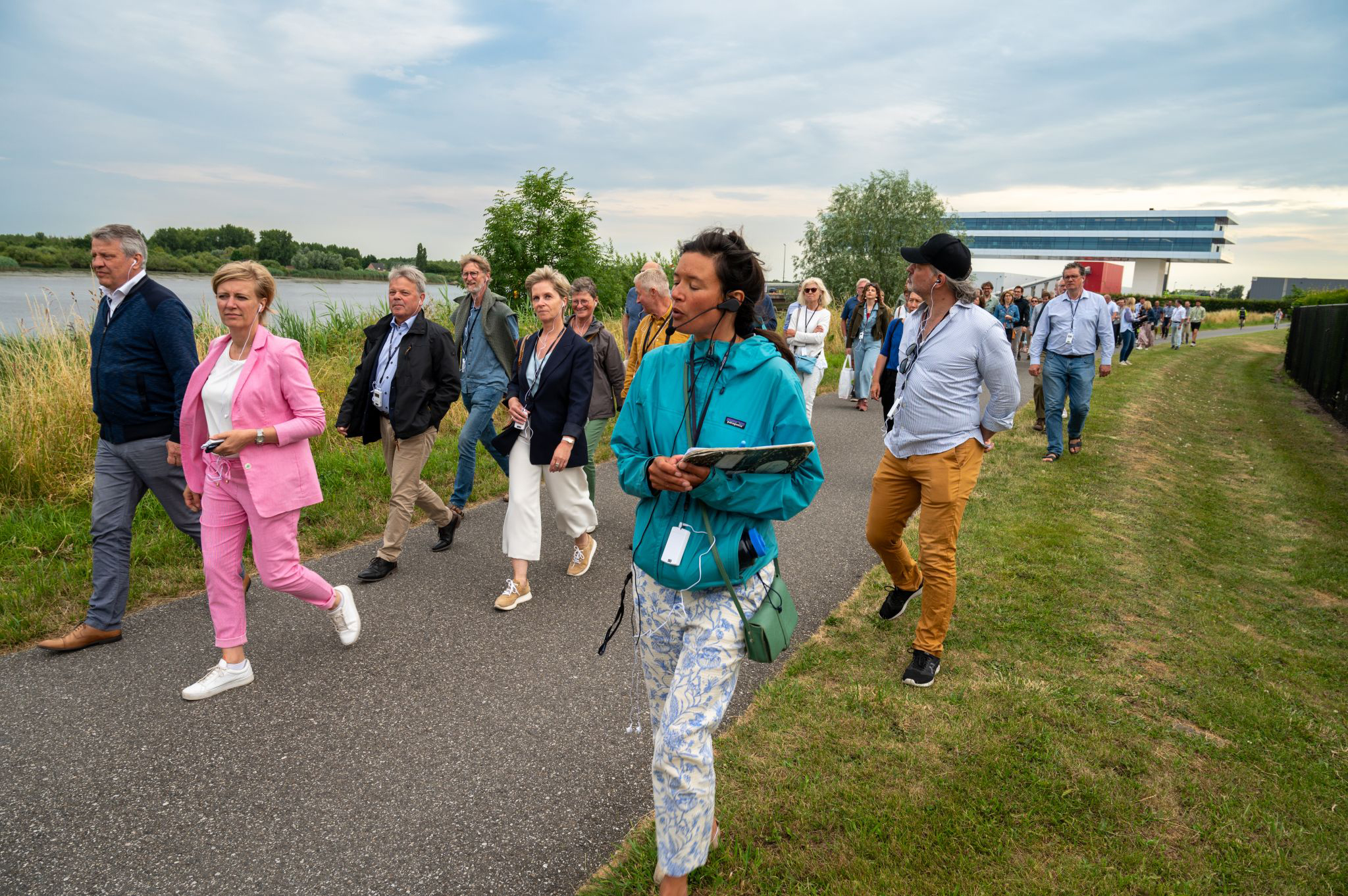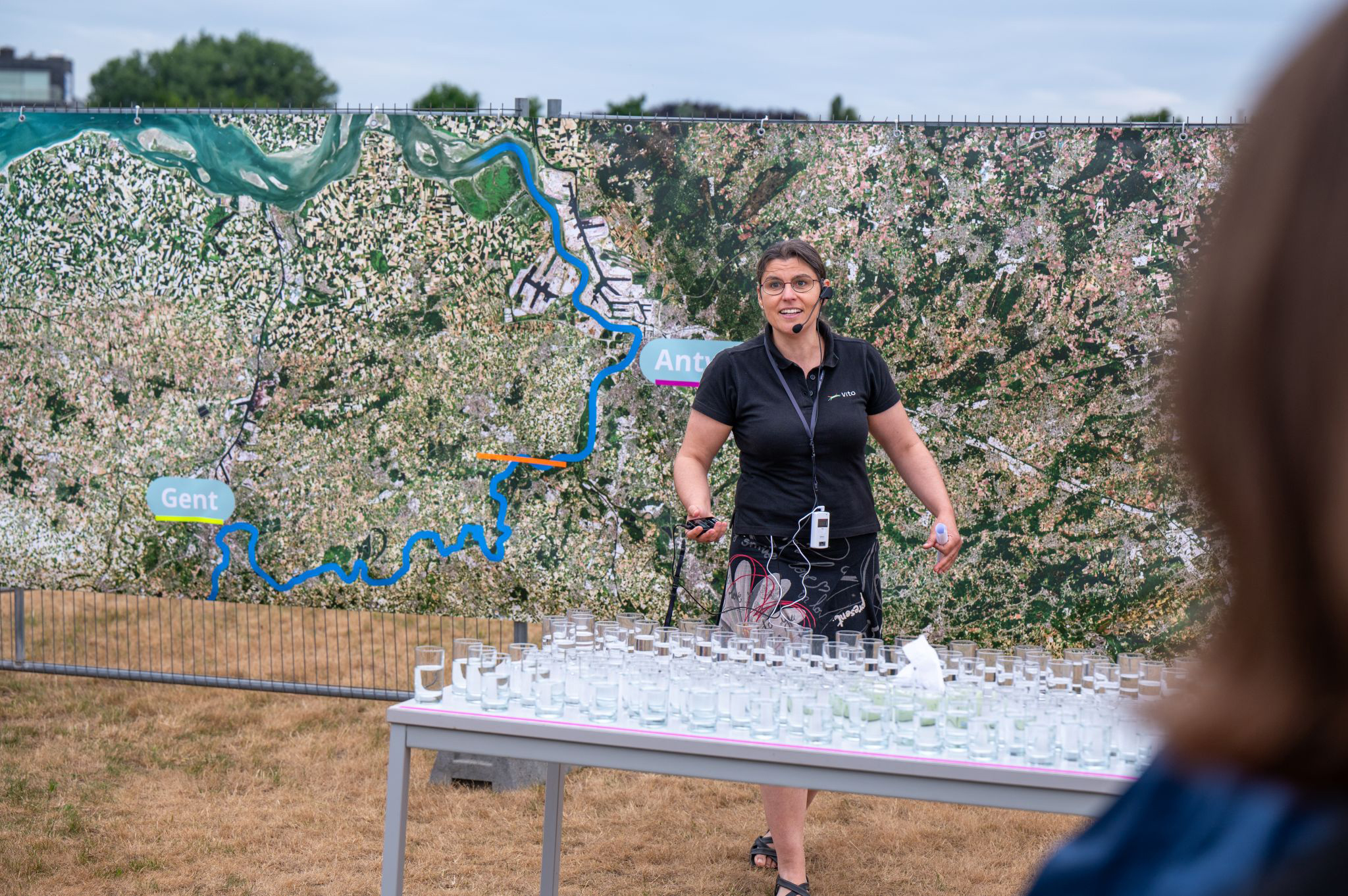On 27 June 2023, the Stroom Festival organised a special walk in the surroundings of the Cordeel site on the Scheldt in Temse. About a hundred visitors went along the Scheldt bank for an experience walk guided by Li An Phoa, philosopher and activist for clean, drinkable rivers. Experts from the University of Antwerp, Flanders Hydraulics Research and VITO gave fascinating presentations on the local ecosystem, the impact of the tides on the Scheldt and the salinity of the river.

The participants were guided along the riverbank where Li An Phoa talked about her dream of drinkable rivers, an initiative through which Phoa draws worldwide attention to the importance of healthy rivers and urges people to take action. Drinkability is still very far away for the Scheldt too, although water quality has already improved significantly in recent decades.
Dieter Meire, researcher at Flanders Hydraulics Research, explained the huge impact of the tidal wave that enters daily via the Western Scheldt. With a difference in water level between high and low tide as much as 5.5 metres at Temse, the impact on the Scheldt's ecosystem is correspondingly great. Without the tide, there would be no mudflats nor salt marshes on the banks of the Scheldt. And these are extremely important for the aquatic life and the nature.

At a subsequent stop, Professor Patrick Meire (UAntwerpen) entertained participants about the plankton in the Scheldt, their importance for the mudflats and salt marshes in the Scheldt valley and for the oxygen content in the river. For that reason, they are sometimes called the lungs and kidneys of a river: they filter the water by removing nitrogen and phosphorus, breaking down organic matter and adding extra oxygen. They also provide an exchange of minerals such as silicon, an important building material for the external skeleton of diatoms, the basis of the food chain in the Scheldt..

At the last stop, Nele Desmet from VITO was waiting at a table full of glasses of water. Based on her expertise in sensor networks and digital water management, she explained how the salinity in the Scheldt varies due to tidal action and precipitation discharge. By taking a sip from the water glasses, the participants could taste the difference in salinity between three locations on the Scheldt: Antwerp, Temse and Ghent. In Antwerp, the water still tastes very salty, in Temse it is still slightly salty, while the water in Ghent tastes just sweet...
Nele Desmet also explained how prolonged drought causes the water in the Scheldt to salinate, resulting in the water upstream tasting more 'Antwerpish'...
In various projects (Internet of Water Flanders, AquaSPICE), VITO is working on the roll-out of sensor networks and the associated data processing to monitor and map such variations in salinity and the impact of drought on salinisation in detail.
Read more on our portfolio pages:
Salinisation in the Belgian coastal areas
Water quality sensoring in the port of Antwerp and at the Albert Canal